Singer Redefines the Diving Tool with Divetrack and Its 24h Dive-Focused Chrono
Singer redefines one of the most established genres, the dive watch, with an unprecedented display and chronograph.
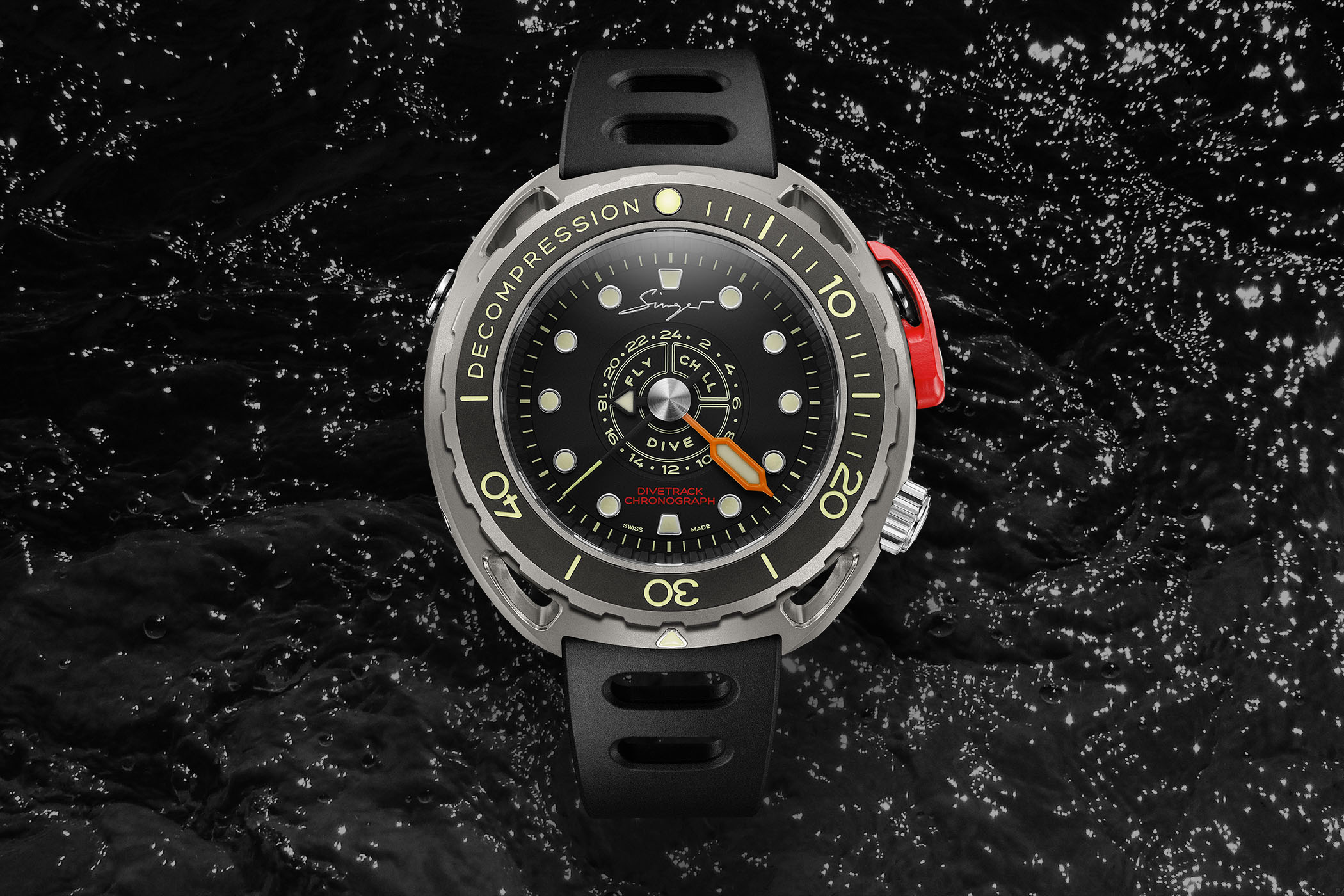
Picture a classic dive watch… It’ll probably be made of steel, with a robust case, a unidirectional bezel with a 60-minute scale, a black dial with large luminous markers and a set of three hands, with an enlarged minute hand and a necessary seconds hand to indicate that your watch is running (basically, I’ve just described a Submariner). This does represent 90% of the genre. But seasoned divers know that they will need more underwater, explaining why most of them also use a diving computer underwater. With this in mind, and its unconventional take on things, indie watchmaker Singer, usually seen around a race track, has decided to bring its own take on the diving instrument. Named Divetrack, it’s a diving chronograph like you’ve never seen before.
Almost everything Singer does is unconventional… Launched in 2017 as a new venture backed up by Singer Vehicle Design and its founder Rob Dickinson, the first model, the Track 1, redefined the racing chronograph with the help of movement maker Agenhor and its innovative AgenGraphe movement. It’ll be followed by the Flytrack in 2020, again with an unusual display and function. Today, the brand takes a closer look at one of the most established genres, a timing instrument that has barely changed since its definition in the early 1950s, the dive watch. Sure, while 90% of dive watches are built around the same overall idea (time-only, rotating bezel), multiple attempts have been made to create a diving tool that redefines the category. Singer’s idea is, however, novel and pretty spectacular.
At a glance, the Singer Divetrack might appear as a modern, originally-shaped and bold take on the dive watch with a few oddities… but nothing more. It does feature a rotating bezel, it has a black dial with large luminous markers and it’s certainly here to take a plunge. But look closer at the centre of its dial, rotate it slightly and look at its side, and you’ll understand there’s more to it than just a classic time-only display. The Singer Divetrack is designed to be your companion before, during, and after your dive. It does everything a dive watch should, and then some more.
Powered by the cutting-edge AgenGraphe movement, just like the Track 1 collection, the Divetrack is first and foremost a diving chronograph, with 24-hour central indication. But, unlike most diving chronographs that simply add a rotating bezel and increased water-resistance to the equation, the Divetrack uses its stopwatch function for highly specific, diving-oriented purposes. In fact, the entirety of its dial isn’t designed to keep track of the standard time. Of course, being a watch after all, the Singer Divetrack indicates the current time, but on the periphery of its case underneath a sapphire container. This feature, usually the main purpose of a watch, is here relegated to the second position by using a rotating disc with luminescent quarters, halves and full hours figures, read thanks to a triangular pointer inserted in the case at 6 o’clock.
What matters regarding diving functionalities is located on the dial and entirely linked to the chronograph. This 24-hour central chronograph is designed specifically to monitor the entirety of your diving session. The central sweeping seconds hand ensures continuous movement (indispensable on a dive watch to know that your watch is running), while the prominent orange minute hand tracks your underwater adventure in conjunction with the 60-minute scale of the rotating bezel. That’s for the classic part, the underwater part of your day…
But the Singer Divetrack is not just for underwater use. On the surface, especially during diving trips or extended stays at a diving site, the watch helps you manage your “surface intervals.” These intervals are crucial for allowing nitrogen absorbed during dives to dissipate safely from your body. With the chronograph still running, you can accurately gauge the length of your surface intervals and plan your subsequent dives accordingly. It also integrates an indication that most non-diving enthusiasts ignore, the safe flying interval.
The central part of the dial is devoted to the 24-hour chronograph indication and is divided into three areas. CHILL (0h-6h): This zone helps you determine the surface interval before your next dive based on factors like previous dive duration, depth, and frequency. DIVE (6h-18h): Indicates when you are clear to dive again after fulfilling the required surface interval. FLY (18h-24h): Post-dive, this zone highlights the safe window before flying to avoid health risks such as pulmonary embolism. As per PADI guidelines, you must wait at least 18 hours after your last dive before flying.
Let’s talk about the watch now. What we’re looking at is both undeniably Singer in design and novel, adding to the traditional helmet-shaped case of the brand all the necessary diving equipment. Made of grade 5 titanium and measuring 49mm in diameter and 19.67mm in thickness, the Singer Divetrack is quite a piece of gear. Water-resistant to 300m, it is built with a sandwich construction with a central sapphire crystal ring (allowing you to see the time disc on the periphery) and is topped by a unidirectional bezel in marine-grade 316L stainless steel with 60 minutes ceramized aluminium ring.
In addition to the crown at 4 o’clock, two pushers control the chronograph function at 2 and 10 o’clock. The start button on the right is protected by a red-ceramic-coated pusher guard, preventing accidental activations and ensuring security. During your dive, the main interaction with your watch involves adjusting the unidirectional bezel for decompression timing. The reset button sits at 10 o’clock and only functions when the chronograph is stopped. It’s also positioned flush with the case and is shielded from external impact. A helium escape valve sits at 8 o’clock.
Both the 60-minute ceramic aluminium ring of the bezel and the dial are treated in matte black with Super-LumiNova-filled indications for optimal legibility underwater. All external components are either matte or micro-blasted to reduce disturbing light reflections. The Singer Divetrack is worn on a black rubber strap with folding buckle and a technical textile strap with Velcro is also included.
Under the sapphire back is one of the great modern chronographs, the AgenGraphe. An automatic movement with innovative construction, it is composed of 479 parts and stores a solid 72-hour power reserve. It is mostly notable due to its architecture with a central 24-hour chronograph function and jumping indicators for both minutes and hours. It also incorporates a novel clutch mechanism that marries the chronograph to the gear train, relying on friction for seamless operation. More details can be read about this movement here.
An innovative watch, which might be a bit over-engineered, the Singer Divetrack Automatic 24-hour Central Chronograph is a unique high-end proposition in the field of dive watches. It’ll be offered in 25 pieces this year, each priced at CHF 85,000 (excl. taxes). For more details, please visit singerreimagined.com.

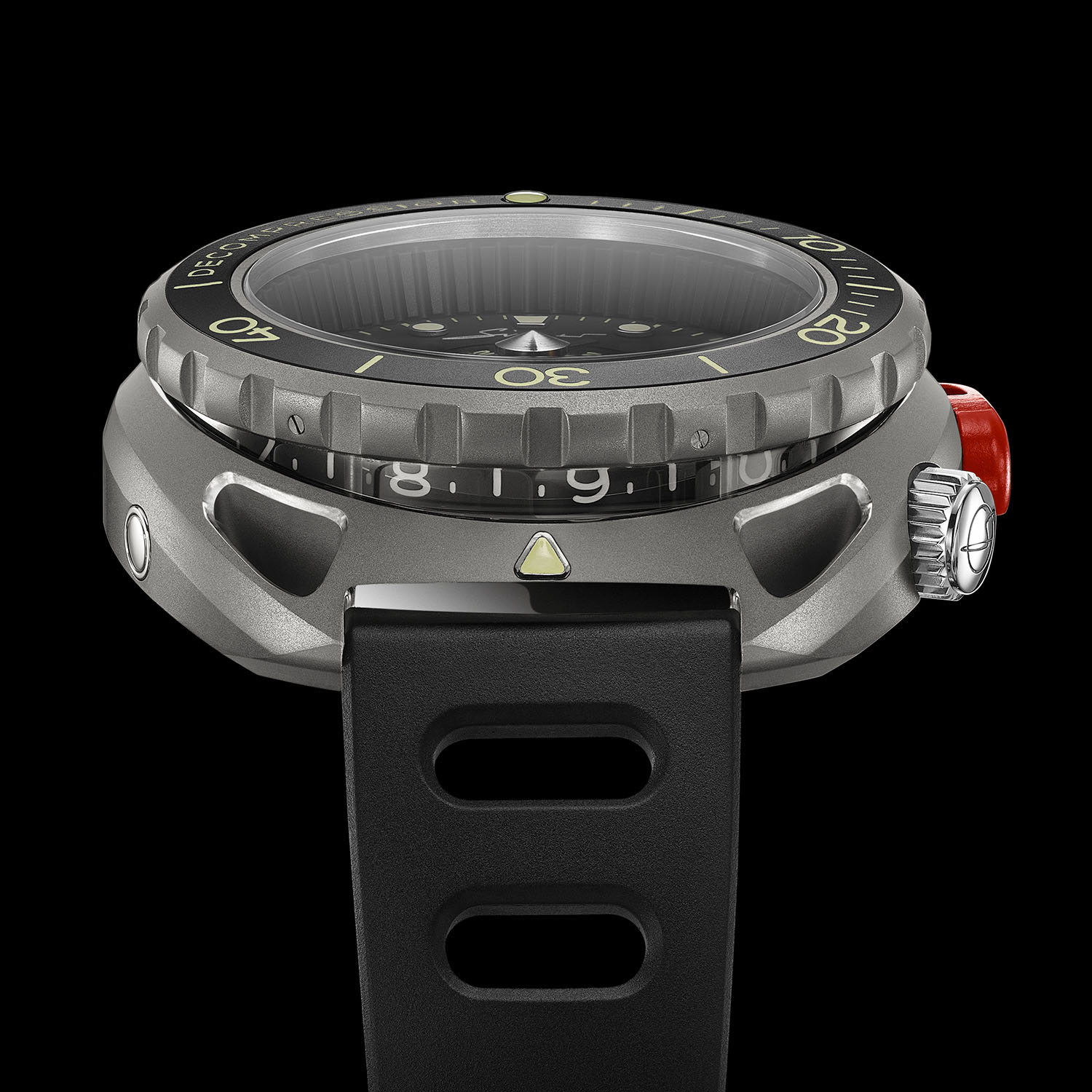
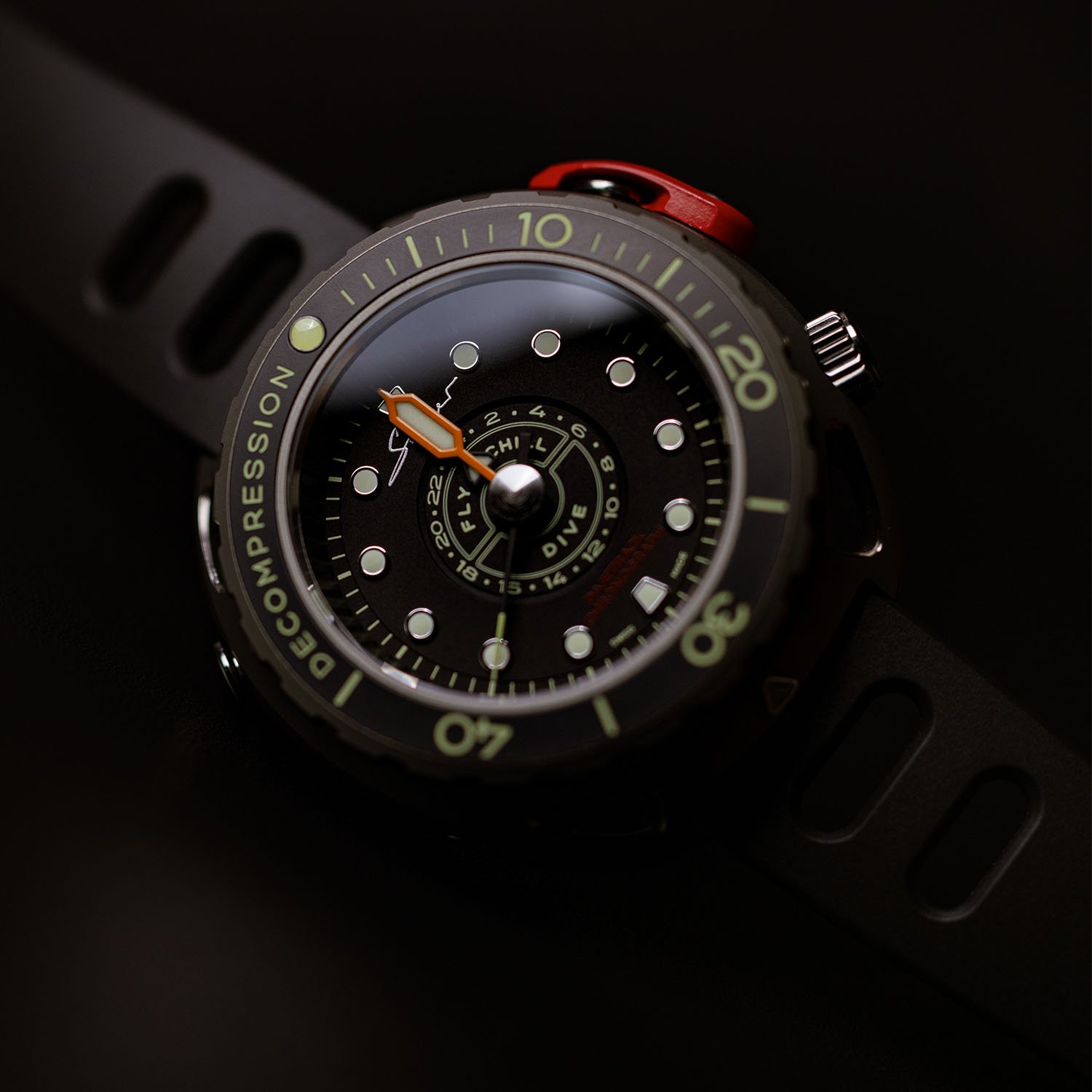
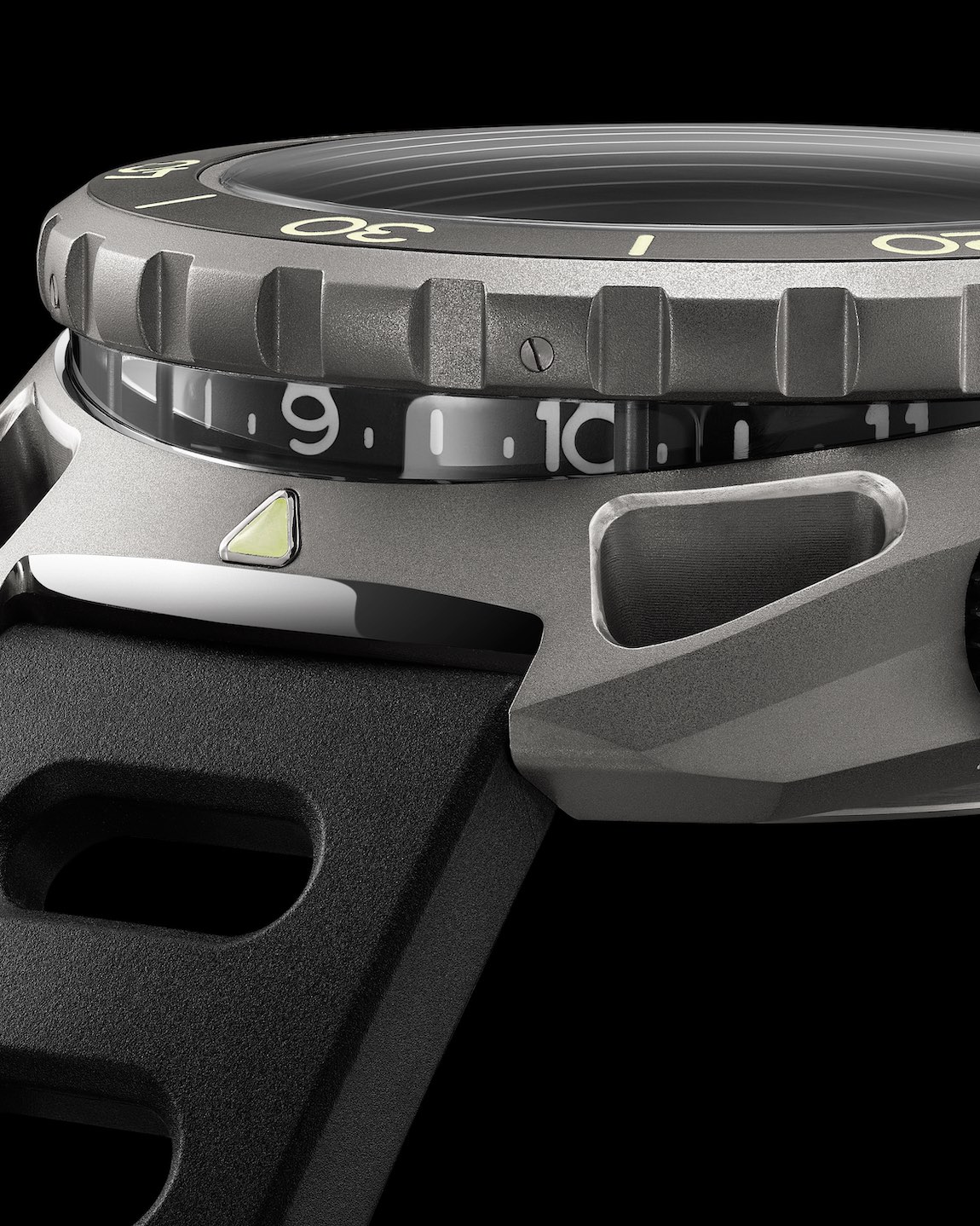





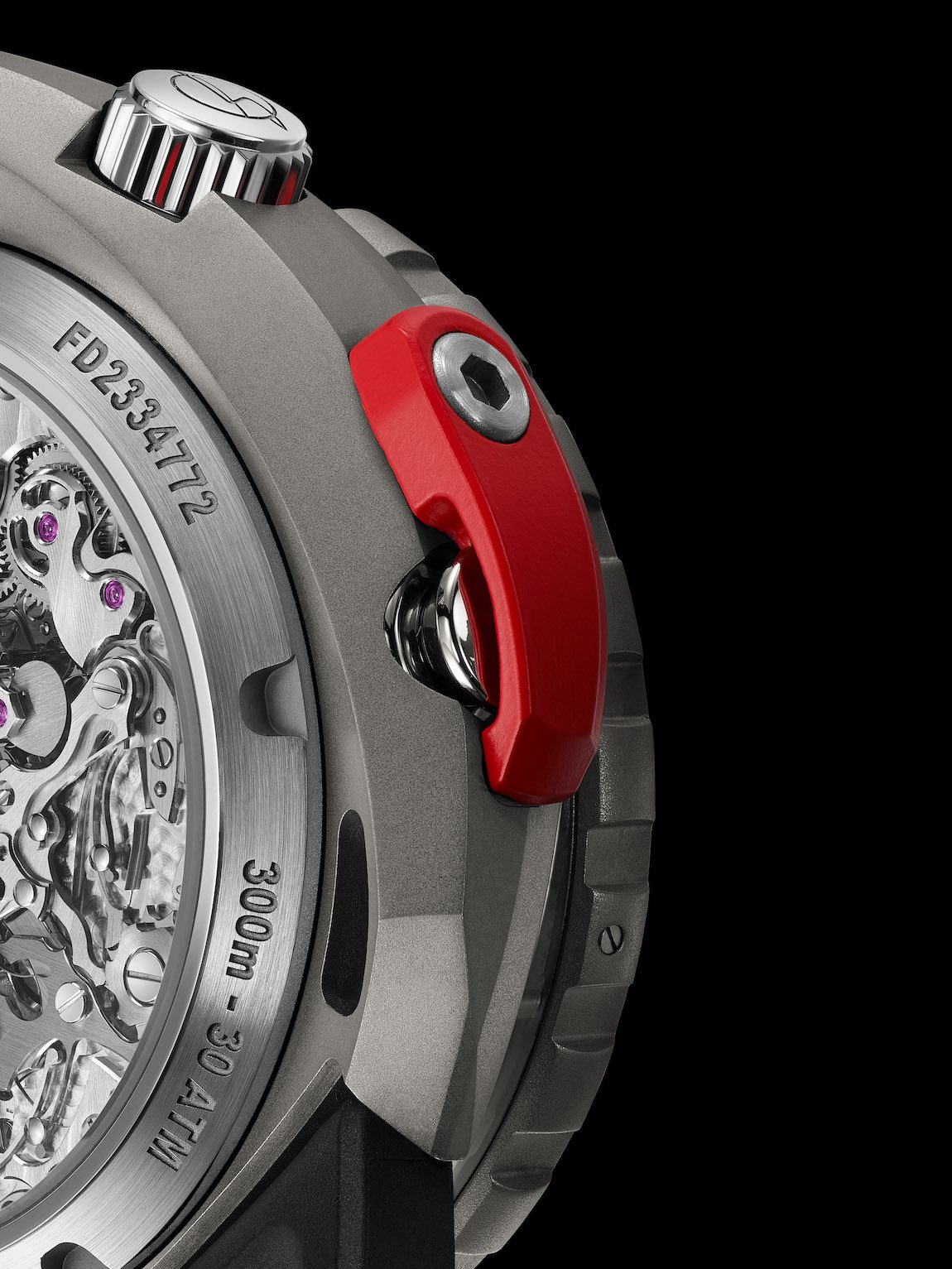





7 responses
Absolutely useless, but essential to keep alive the magic of watchmaking! Who is the mastermind behind this?
very nice concept… with a concept price. are they trying to reach richard mille levels? limited edition at that. Would love a reasonably price general release one.
Hi Brice, thanks for sharing.
I’m glad to see something really fresh in the realm of diving watches. The central dial is an original idea for a real diver, I was not aware of these time intervals so there’s always something to learn thanks to watchmaking.
Only doubt is the size of this timepiece, but being almost lugless it should wear smaller than its 49 mm.
Regards,
Andrea
@Andrea – thanks for your comment. Indeed, I still learn things when writing. I wasn’t totally aware of the flying issue (but eh, it makes sense). We will see the watch in a couple of weeks, but I can’t imagine it being really small. Must be “acceptable” out of the water, but it surely is meant to be worn over a wetsuit
Pretty, but almost entirely useless. These days no scuba diver would go down without a dive computer to calculate no deco time, deco stops, ascent rates, depth alerts, integrate with air pressure to calculate air usage rates, measure surface intervals etc. On more challenging technical dives many will carry two for redundancy. Few people remember their dive tables.
It can be a fun novelty to wear a conventional dive watch too, at the cost of potentially banging up the watch on the boat, tanks, ladder, cave walls etc. At 95k USD pre tax, these aren’t going to be seen any further underwater than a leisurely poolside.
Build Back Better pricing?
Not only useless but extreamly pricey, compare it to blancpain fifty fathoms x fathoms (closest competitor I guess?) Its for HALF the price and it actually adds value under water